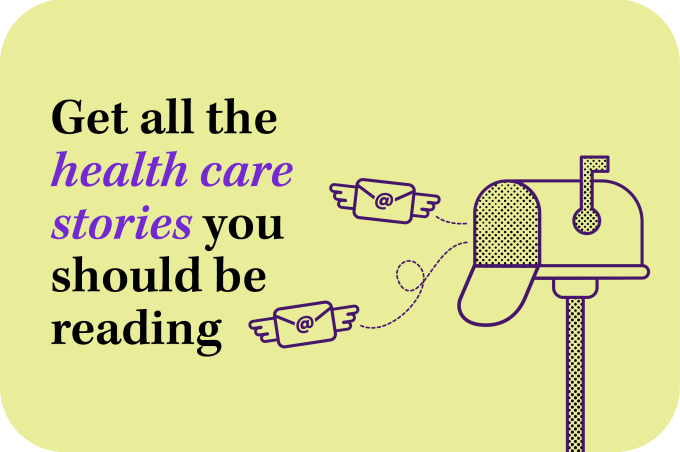When Hurricane Ida rolled through the Gulf South in 2021, patients at Ochsner Health who were pregnant were able to continue their prenatal care during evacuation. This is because physicians were checking blood pressure readings and conducting virtual visits through an innovative maternal digital medicine program that has improved hypertension outcomes for expectant mothers.
“We could coordinate things with them from whatever distance they were at,” said Joseph Biggio, MD, system chair and service line leader for women's services at Ochsner Health. He is also system chair of maternal fetal medicine at Ochsner Health.
Dr. Biggio joined guest host Margaret Lozovatsky, MD, AMA’s vice president of digital health innovations, on the “AMA STEPS Forward® Podcast” to discuss the triumphs and future plans of Ochsner Health's Connected Maternity Online Monitoring (MOM) program.
Louisiana-based Ochsner Health is a member of the AMA Health System Program, which provides enterprise solutions to equip leadership, physicians and care teams with resources to help drive the future of medicine.
“We're all aware that there's a disconnect between the transformative potential of digital health and how it's being used today, making it difficult for health care organizations to fully realize the value of digitally enabled care,” said Dr. Lozovatsky. The AMA Future of Health case study (PDF) released in 2022 laid out a blueprint for organizations to optimize digitally enabled care.
AMA’s study featured the Connected MOM program, which provides patients with Bluetooth-enabled blood pressure cuffs so they can regularly monitor their blood pressure. This can prevent complications from high blood pressure as well as cardiovascular conditions, thrombotic embolism and hypertensive disorders of pregnancy. The program achieved success across six key performance metrics.
Connected MOM promotes communication between patient and physician and engages the patient in their care. If a patient’s blood pressure is out of range or elevated, an app provides instructions to retake the blood pressure or call for medical assistance.
“Each physician has a dashboard that is visible when they log on to the electronic health record that lets them see data on all of their enrolled patients,” said Dr. Biggio. Doctors can view blood pressure readings, patient compliance with the program and the frequency of submission. They can also track their patients and see their blood pressure trends.
The program automatically sends reminders if a patient doesn’t submit a blood pressure reading within seven days.
Partnering to form building blocks
Dr. Biggio attributed Connected MOM’s success to the partnerships and collaborations it built with various stakeholders in the medical community.
This includes the physicians who helped design the program’s workflow in a useable way for patients. The patients themselves also served as key players by testing preliminary iterations and providing feedback about ease of use and what would be acceptable.
Meanwhile, technology teams designed the digital interface and devices and integrated this program into the EHR to make it a seamless process.
Ongoing dialogue between all these stakeholders has “allowed the program to continue to evolve in the way it has and allow us to make the modifications that have been needed, even over the last six months,” said Dr. Biggio.
Identifying hypertension earlier
A deep dive into Connected MOM’s data revealed it was identifying hypertensive disorders of pregnancy earlier than other, more traditional models of care.
“It allowed for a bit more expectant management in that way, and it didn't increase C-section rates. It didn't increase adverse outcomes,” said Dr. Biggio.
The program also kept patients engaged and motivated about developments in their pregnancy, which contributed to a higher likelihood of postpartum blood pressure checks and pediatric follow up.
Connected MOM has been particularly helpful for patients with access to care challenges.
“That’s clearly where we saw the greatest benefit in terms of postpartum blood-pressure compliance,” said Dr. Biggio. It’s these types of patients who’ve reported the greatest satisfaction with the program and who want to sign up for it in future pregnancies, he added.
Using equity lens to improve access
Addressing the biggest challenges, there’s always the technology component—whether it’s access problems to a smartphone or broadband availability, or difficulty linking the device with the blood pressure monitor or other monitors.
“Those are all things that we know we have to work to achieve,” said Dr. Biggio.
Connected MOM could also do more in improving access to care, especially among patients from historically marginalized communities, he continued.
“We've looked at some of the data for Connected MOM and we know that as we try to approach further development, from an equity lens, we have to work to make sure that all of the patients we serve really have access to this type of technology,” Dr. Biggio said.
Recent data identifies an opportunity to improve the rates of enrollment and engagement among Ochsner’s Black patients as compared with white patients, and between its urban population and its rural population. These factors have “given us direction to work in as we continue to grow and evolve the program,” said Dr. Biggio.
Expanding the program
The program’s success provides an impetus to expand its horizons.
Digital prenatal care now lacks a reliable way to assess the fetus virtually, to know what the fetal heart rate is, and to have any reassurance of fetal well-being. This is one area “where we are really interested in continuing to work and develop further technology,” said Dr. Biggio.
Ochsner Health has been working with some companies to find ways to validate home fetal monitoring. Such technology needs to be reliable and work with Ochsner’s digital medicine platforms, providing a means for remote prenatal care for most visits, he said.
Looking at what Connected MOM has been able to achieve for the general obstetric population, the next big step is taking the success of that program and combining it with other Ochsner Health digital medicine offerings for non-pregnant patients with conditions such as hypertension and Type 2 diabetes.
The challenge is figuring out how to use and integrate these programs with health coaches, clinically associated and affiliated pharmacists and other kinds of Bluetooth-enabled devices to deliver a higher level of prenatal care to patients without the need to travel while keeping them engaged, said Dr. Biggio.
“We could say that much of that could be accomplished with telemedicine alone, but we feel that using these digital tools … builds that ongoing engagement a lot more than somebody writing things on a piece of paper and uploading it to their EHR or faxing it into an office just prior to that virtual visit,” he explained.
Explore more with the AMA through other case studies on digitally enabled care in action.




